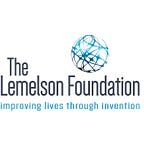Invention Roundup: Inventors Addressing COVID-19 Pandemic
From Rapid Testing in Low-Resource Countries to Ventilator Splitters
In a global pandemic, one size does not always fit all when it comes to protective gear, equipment and diagnostic testing.
Take, for example, the varied environmental factors that impact diagnostic testing methodologies. What might work in urban settings such as New York City may not work when trying to reach remote communities in a developing country where transportation is difficult and lab facilities are hours away.
Inventors and innovators across all sectors are racing to develop new hardware devices and finding new uses for existing technologies to fight the pandemic and save lives. Here is a round-up of just a few:
Rapid Testing for Low-Resource Countries
Portland-based Hemex Health is partnering with Seattle-based PAI Life Sciences on a rapid COVID-19 diagnostic test for use in low-resourced countries. The test will use Hemex’s Gazelle Diagnostic platform, combining testing with cloud-based reporting in a battery-powered reader smaller than a shoebox. Gazelle eliminates the need for cold chain that many diagnostic technologies require, but that is difficult to maintain in a tropical climate.
Wearable Detection and Monitoring Device
Chicago-area researchers are developing a wearable device about the size of a stamp that aims to detect early signs of COVID-19 and monitor infected patients. Created by teams at Northwestern University and Shirley Ryan AbilityLab, the wireless device, which adheres to the base of the neck, continuously measures body temperature, heart rate and respiratory activity, including irregular breathing.
Sleep Apnea Machines Converted to Ventilators
Ventilator SOS, a project started by UC Berkeley engineers and local healthcare professionals, wants you to donate your unwanted sleep apnea machines. In the event of a shortage of ventilators, these CPAP and BiPAP machines could be used to safely treat COVID-19 patients…To convert them, the UC Berkeley team installs two different filters: one to filter the oxygenated air being delivered to the patient, and another to refilter the air as it is released back into the surrounding environment.
Weaning off Ventilators
As hospitals face the possibility of ventilator shortages for COVID-19 patients, Synapse Biomedical announced that it received FDA Emergency Use Authorization for a device that helps wean patients off ventilators more quickly. This, in turn, could free up ventilators for use by other patients.
The Space Industry
While production of rockets and satellites continues across much of the space industry amid the coronavirus pandemic, engineers at several space companies — including SpaceX, Virgin Orbit and Blue Origin — have started working on medical devices and protective equipment in response to shortages in hospitals across the United States. Virgin Orbit has designed a simplified ventilator at its rocket factory in Long Beach, California, while SpaceX has agreed to supply valves for ventilators produced by the medical supply company Medtronic.
Microneedle Patch for Future Vaccine Delivery:
Microneedle arrays (MNAs) are a promising way of delivering vaccines into the body. They are nearly pain-free and can penetrate a substantial portion of the skin, which is considered an excellent place to inject vaccines because of the skin’s sensitive and very reactive immune network…A team at the University of Pittsburgh School of Medicine have now developed a microneedle array patch that can carry live or attenuated viral vectors, as well as adjuvant compounds to boost vaccine effectiveness.
Ventilator Splitter
The Vent Multiplexor device was developed by a team of students and faculty at Yale University and Yale New Haven Hospital. It is a patent-pending co-ventilation device intended for temporary use when two patients both require emergency mechanical ventilation when only one ventilator is available. Importantly, the device allows ventilator sharing between two patients whose lung capacities and ventilator setting requirements are different. The Vent Multiplexor can be produced with 3D printing and minimal production lead time, according to the company.
